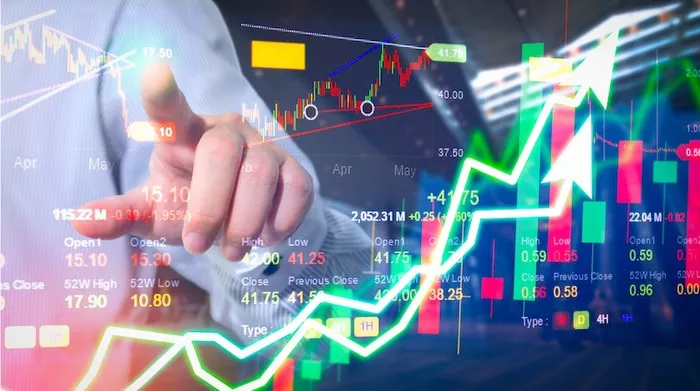In the world of futures trading, futures symbols play a crucial role in identifying and tracking specific futures contracts across different asset classes and exchanges. Futures symbols are shorthand codes used to represent individual futures contracts, each corresponding to a particular underlying asset, expiration month, and contract specifications. Understanding futures symbols is essential for traders and investors to navigate the futures markets efficiently and execute trades with precision. In this article, we will delve into the intricacies of futures symbols, exploring their structure, conventions, and significance in futures trading.
Structure of Futures Symbols
Futures symbols are typically composed of alphanumeric characters that convey essential information about the underlying asset, contract expiration, and contract specifications. The structure of futures symbols may vary slightly depending on the exchange and asset class but generally follows a standardized format. Common components of futures symbols include:
1. Root Symbol: The root symbol represents the underlying asset or commodity that the futures contract is based on. Root symbols are typically short abbreviations or acronyms that identify the asset, such as “CL” for crude oil, “GC” for gold, or “ES” for E-mini S&P 500.
2. Month Code: The month code indicates the expiration month of the futures contract. Each month is assigned a specific letter code, with “F” representing January, “G” representing February, “H” representing March, and so on, up to “Z” for December. For example, “F” corresponds to January, “G” to February, and so forth.
3. Year Code: The year code represents the expiration year of the futures contract. Year codes are typically represented by the last digit of the year, with “0” representing the year 2020, “1” representing 2021, “2” representing 2022, and so on.
4. Contract Month Code: Some futures contracts may have multiple expiration months available for trading, known as contract months. Contract month codes are used to differentiate between different expiration months within the same calendar year. For example, “H” may represent March, while “M” represents June.
5. Additional Codes: In addition to the root symbol, month code, and year code, futures symbols may include additional codes or modifiers to specify contract specifications such as contract size, delivery location, or trading platform.
Conventions for Futures Symbols
Futures symbols follow established conventions and standards to ensure consistency and clarity across exchanges and trading platforms. While there may be variations in symbol formats and conventions between different exchanges and asset classes, certain principles apply universally:
1. Root Symbols: Root symbols are typically standardized abbreviations or acronyms that reflect the underlying asset or commodity. Root symbols are chosen to be concise, easily recognizable, and widely understood within the trading community.
2. Month Codes: Month codes follow a consistent alphabetical sequence, with each letter representing a specific month of the year. The use of month codes allows traders to quickly identify the expiration month of a futures contract without ambiguity.
3. Year Codes: Year codes represent the last digit of the expiration year and are assigned sequentially based on the calendar year. Year codes help differentiate between futures contracts with different expiration years and facilitate expiration month rollover.
4. Contract Month Codes: Contract month codes are used to distinguish between different expiration months within the same calendar year. Contract month codes follow a sequential alphabetical sequence, starting with “F” for January and ending with “Z” for December.
5. Delimiter Characters: Delimiter characters such as slashes (“/”) or dashes (“-“) may be used to separate the root symbol, month code, and year code within a futures symbol. Delimiters enhance readability and facilitate parsing of futures symbols by trading platforms and software systems.
Significance of Futures Symbols
Futures symbols serve several important functions in futures trading:
1. Identification: Futures symbols uniquely identify individual futures contracts, enabling traders to specify the exact contract they wish to trade or analyze. By referencing futures symbols, traders can differentiate between different contracts based on the underlying asset, expiration month, and other contract specifications.
2. Communication: Futures symbols serve as a common language for communication among traders, brokers, exchanges, and trading platforms. Traders can convey their trading intentions, execute orders, and access market data using futures symbols, facilitating efficient communication and interaction within the futures market ecosystem.
3. Market Access: Futures symbols provide traders with access to a wide range of futures contracts across different asset classes, markets, and exchanges. By understanding futures symbols, traders can identify opportunities, execute trades, and manage their positions in various futures markets, including commodities, currencies, equity indices, and interest rates.
4. Risk Management: Futures symbols play a crucial role in risk management, allowing traders to hedge against price risk, diversify their portfolios, and protect against adverse market movements. By trading futures contracts with different expiration months or underlying assets, traders can tailor their risk exposure and mitigate the impact of market volatility on their investment portfolios.
Conclusion
In conclusion, futures symbols are essential tools for navigating the complex landscape of futures trading, providing traders with a standardized language to identify, analyze, and trade futures contracts across different asset classes and exchanges. By understanding the structure, conventions, and significance of futures symbols, traders can efficiently access and participate in the futures markets, execute trading strategies, and manage risk effectively. Whether identifying specific contracts, communicating with market participants, or analyzing market data, futures symbols serve as a foundational element of futures trading and play a central role in shaping the dynamics of the global derivatives market.


